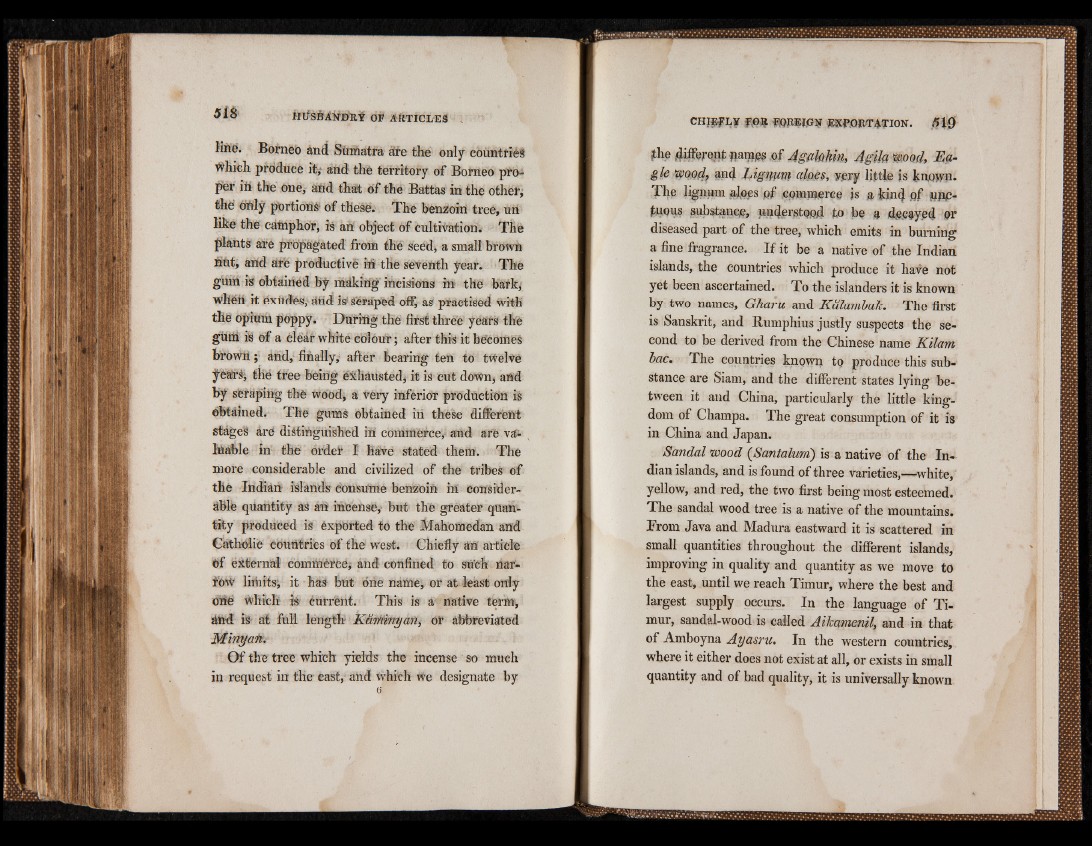
line. Borneó ànd Sumatra afe the only countries
Which produce it, and the territory of Borneo proper
iii the one, and that of thé Battas in the other,
the' Only portions- of these. The benzoin tree, utt
Me the camphor, is an object of cultivation. The
plants are propagated from the seed, a small brown
nnt, and aré productive in the seventh year. Thé
gum is obtained by making incisions in the bark;
whëü it éxüdes, ánd is* Scraped off, as practised with
the opium poppy. During thé first three years thé
guiti is of a clear white colour; after this it becomes
brown ; ánd,- finally; after bearing ten to twelve
ÿèarS; thé tree being éxhausted, it is cut dôWn$ and
bÿ scraping the wood, a very inferior production is
obtained. The gums obtained iii these different
stágeS are distinguished in commerce; and are valuable
in the order I have stated them. The
more considerable and civilized of the tribes of
thè Indian islands’ consume benzoin in considerable
quantity as an incense,- but the greater quantity
produced & éxported to thé Mahomedan and
Catholic countries of the west. Chiefly an article
Of external cómmércé,' ánd confined to such nar-
foW limits; it has but one name, or at least only
ono which is éufr'ént. This is a native term;
ánd is- at full length- Karftmyan, or abbreviated
Minyaft.
Of the tree which yields the incense so much
in request in the- east, and which we designate by
^he different paipes of 4 g a M k , 4 g ik f wood, Eagle
tvoodp and JAgtWV} aloes, very little is known«
The lignum afojss of epmioeree is a kind of PPC-
fnous substance, understood to be a decayed or
diseased part of the tree, which emits in burning
a fine fragrance. If it be a native of the Indian
islands, the countries which produce it have not
yet been ascertained. To the islanders it is known
by two names, Gharu and Kalambak. The first
is Sanskrit, and Rumphius justly suspects the second
to be derived from the Chinese name Kilam
bac. The countries known to produce this substance
are Siam, and the different states lying between
it and China, particularly the little kingdom
of Champa. The great consumption of it is
in China and Japan.
Sandal wood (Santalum) is a native of the Indian
islands, and is found of three varieties,—white,
yellow, and red, the two first being most esteemed.
The sandal wood tree is a native of the mountains.
From Java and Madura eastward it is scattered in
small quantities throughout the different islands,
improving in quality and quantity as we move to
the east, until we reach Timur, where the best and
largest supply occurs. In the language of Timur,
sandal-wood is called Ailcamenil, and in that
of Amboyna Ayasru. In the western countries,
where it either does not exist at all, or exists in small
quantity and of bad quality, it is universally known